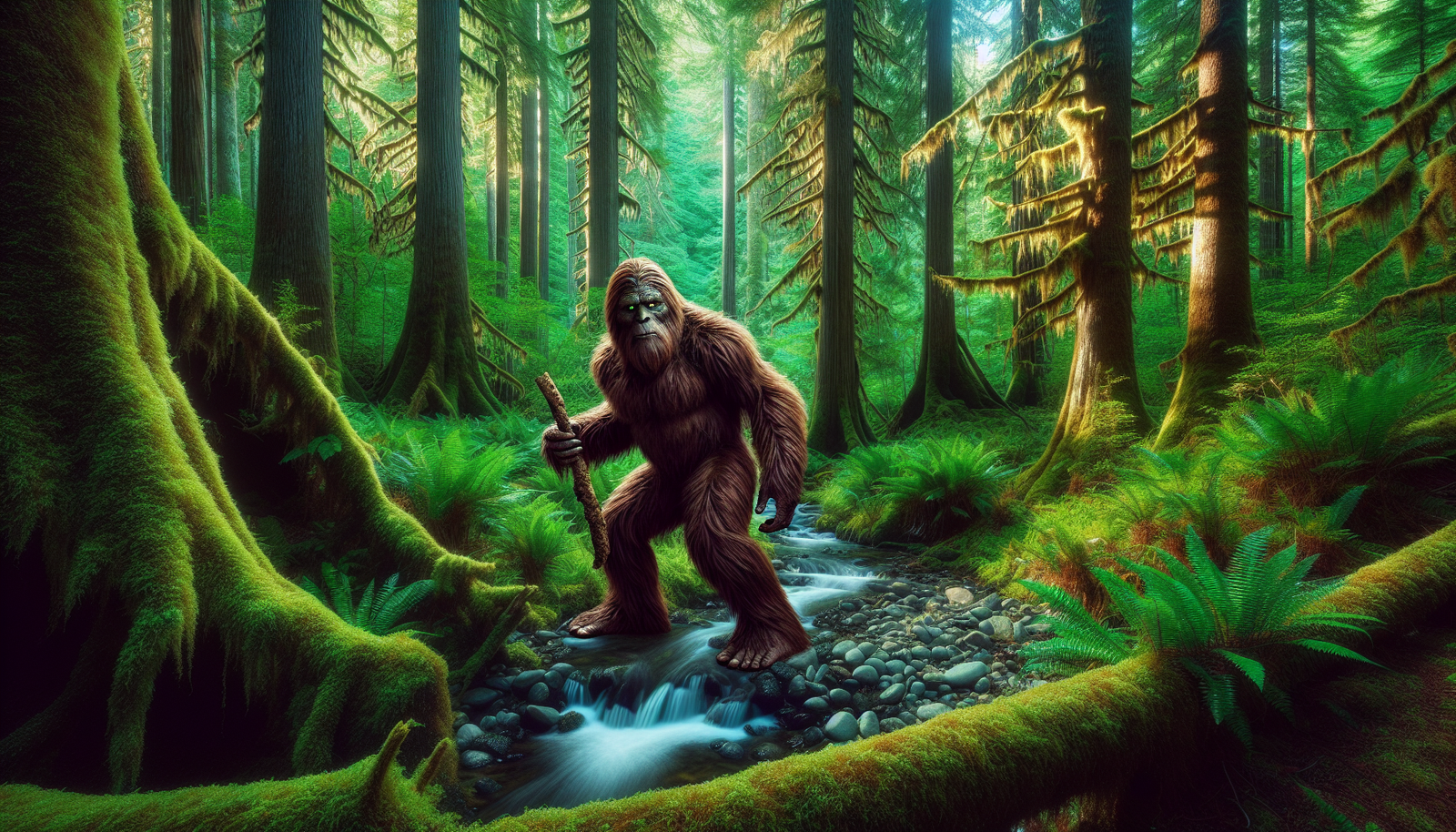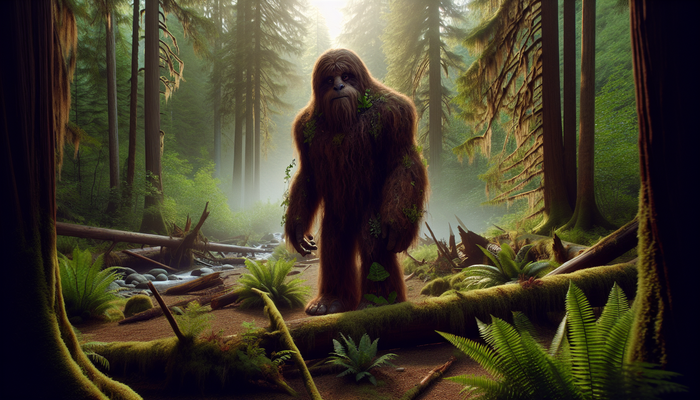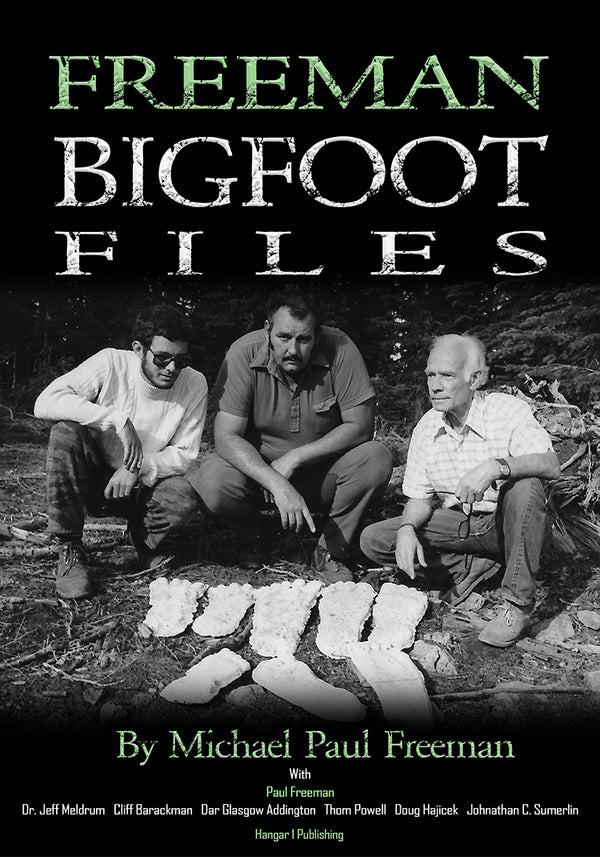Exploring Bigfoot's Use of Tools: Evidence and Insights

By James Roberts, Cryptozoologist
The Legend of Bigfoot and Tool Use
The legend of Bigfoot has captivated imaginations for generations, sparking countless debates, expeditions, and campfire tales. This elusive creature, also known as Sasquatch, is said to roam the dense forests of North America, leaving behind tantalizing clues of its existence. But beyond the footprints and fleeting glimpses, a more intriguing question emerges: Could Bigfoot be capable of using tools?
This isn't just idle speculation. The ability to use tools is a hallmark of intelligence in the animal kingdom, often associated with problem-solving skills and advanced cognitive functions. From the precise manipulations of a chimpanzee fishing for termites to the clever beak work of a crow fashioning a hook, tool use opens a window into the minds of creatures we share this planet with. If Bigfoot exists and uses tools, it would revolutionize our understanding of this cryptid and its place in the natural world.
Defining Tool Use in the Animal Kingdom
Let's start by defining what we mean by tool use. In the simplest terms, it's the manipulation of an object to achieve a goal. This could be anything from using a stick to reach food to employing a rock as a hammer. In the animal kingdom, tool use is diverse and fascinating. Otters use rocks to crack open shellfish, while elephants have been observed using branches to swat flies. These behaviors aren't just instinctive – they often involve learning, problem-solving, and even cultural transmission within animal societies.
Anecdotal Evidence of Bigfoot Tool Use
Now, imagine a Bigfoot picking up a fallen branch, stripping it of leaves, and using it to dig for grubs or roots. This scenario isn't as far-fetched as it might seem at first glance. In fact, there are numerous anecdotal reports of Bigfoot engaging in behaviors that suggest tool use.
The Lunch Box Incident
One of the most compelling accounts comes from a fisherman in Branson, Missouri. About 25 years ago, while enjoying a peaceful day by the water, he witnessed something extraordinary. A large, hair-covered creature emerged from the woods carrying what appeared to be an old-style silver lunch box. The Bigfoot approached the water's edge, knelt down, and used the lunch box to scoop up water. After taking a long drink, it refilled the container and disappeared back into the forest.
This story is remarkable for several reasons:
- It suggests that Bigfoot is capable of recognizing the utility of human-made objects.
- The lunch box wasn't just a curiosity – it was repurposed as a water container.
- The act of carrying water away from its source implies planning and foresight.
Other Reported Tool Use
But the lunch box incident isn't an isolated case. Other reports paint a picture of a creature with a diverse toolkit:
- Using sticks to dig, much like chimpanzees do when foraging for termites or other insects.
- Using rocks to crack open turtle shells, demonstrating problem-solving skills and knowledge of local food sources.
Implications of Bigfoot Tool Use
Intelligence and Evolutionary History
These reports, while fascinating, raise an important question: If Bigfoot is using tools, what does this tell us about its intelligence and evolutionary history? Tool use in animals is often seen as a marker of cognitive sophistication. In primates, it's associated with larger brain sizes and more complex social structures. If Bigfoot is indeed a tool user, it suggests a level of intelligence that might rival or even surpass that of known great apes.
From an evolutionary perspective, the implications are staggering. Some researchers speculate that Bigfoot could be a remnant population of an ancient hominid species, perhaps related to Gigantopithecus or another large primate that was thought to be extinct. If this is the case, tool use in Bigfoot could provide a window into the cognitive capabilities of our evolutionary cousins.
Cultural Significance
The cultural significance of a tool-using Bigfoot can't be overstated. In many ways, tool use is seen as a distinctly human trait, one that separates us from "mere animals." The idea of Bigfoot wielding tools blurs this line, forcing us to reconsider our place in the natural world. It humanizes Bigfoot, transforming it from a simple beast into a thinking, problem-solving being that might share more in common with us than we'd like to admit.
This concept resonates deeply with many indigenous cultures that have long spoken of Sasquatch as more than just an animal. In these traditions, Bigfoot is often portrayed as a guardian of the forest, a wise being that exists between the human and natural worlds. The addition of tool use to the Bigfoot mythos only strengthens these cultural connections, painting a picture of a creature that is both wild and intelligent, primitive and sophisticated.
Scientific Skepticism and the Need for Evidence
However, it's crucial to approach these stories with a critical eye. The scientific community remains skeptical of Bigfoot's existence, let alone its ability to use tools. The lack of concrete physical evidence – no bodies, no DNA, no unambiguous photographs or videos – means that all reports of tool use remain firmly in the realm of anecdote.
This doesn't mean we should dismiss these accounts outright. After all, the history of science is full of discoveries that were once thought impossible. But it does mean we need to apply rigorous standards of evidence and analysis to claims of Bigfoot tool use.
Comparative Analysis with Known Tool-Using Animals
One way to approach this is through comparative analysis with known tool-using animals. Primatologists have extensively documented tool use in chimpanzees, bonobos, and orangutans. These studies provide a framework for understanding what tool use might look like in a large, intelligent primate like Bigfoot.
For example, we know that tool use in great apes often involves:
- A period of learning and cultural transmission
- Different "styles" of tool use in different regions
- Signs of practice and experimentation
Modern Technology in Bigfoot Research
The field of Bigfoot research, often called "cryptozoology," has embraced a range of high-tech tools to aid in the search for evidence:
Trail Cameras
These motion-activated devices can be left in remote areas for months at a time, silently recording any activity that passes by. While they haven't captured definitive proof of Bigfoot yet, they've provided tantalizing glimpses of large, unidentified creatures moving through the forest.
Audio Recording Technology
High-quality audio equipment has captured some intriguing sounds that defy easy explanation. While these recordings don't directly relate to tool use, they could provide valuable context about Bigfoot's cognitive abilities and social structure.
Drones
Some Bigfoot researchers have used thermal imaging cameras mounted on drones to search for heat signatures in dense forests. While this technology hasn't yielded definitive proof of Bigfoot yet, it's expanded our ability to search in ways that were impossible just a few years ago.
Environmental DNA (eDNA) Sampling
This technique allows researchers to detect the presence of organisms by analyzing genetic material left behind in the environment. While it hasn't been successfully applied to Bigfoot research yet, it holds promise for future investigations.
Conservation and Bigfoot Research
The search for evidence of Bigfoot tool use isn't just about proving or disproving the existence of a legendary creature. It's part of a broader effort to understand and protect the natural world. Many Bigfoot researchers are also passionate conservationists, using their expeditions as opportunities to document biodiversity and advocate for wilderness preservation.
This connection between Bigfoot research and conservation is more than incidental. The areas where Bigfoot is said to live – remote, old-growth forests and rugged mountain ranges – are often biodiversity hotspots under threat from human encroachment. By drawing attention to these areas and the mysteries they might hold, Bigfoot researchers help make the case for their protection.
Cultural Impact of Bigfoot
The cultural impact of Bigfoot extends far beyond the realms of cryptozoology and conservation. This creature has become a true icon, appearing in everything from serious documentaries to campy B-movies. The idea of Bigfoot resonates with something deep in the human psyche – a fascination with the unknown, a longing for wilderness, and perhaps a hope that we're not alone in our cognitive capabilities.
Global Parallels
Bigfoot isn't unique in this regard. Cultures around the world have legends of wild, human-like creatures:
- The Yeti of the Himalayas
- The Yowie of Australia
- The Almasty of Central Asia
Indigenous Perspectives
In many indigenous cultures, Bigfoot-like creatures are more than just monsters or curiosities. They're often seen as guardians of the natural world, keepers of ancient wisdom, or reminders of our own wild origins. The Lakota people, for instance, speak of the Chiye-tanka or "Big Elder Brother," a large, hairy humanoid that protects the forest and its creatures.
Conclusion: The Value of the Bigfoot Phenomenon
Whether or not Bigfoot exists – and whether or not it uses tools – the very idea of such a creature prompts us to ask important questions about our place in the natural world. As we continue to explore the possibilities of Bigfoot tool use, it's important to maintain a balance between open-mindedness and skepticism.
For those intrigued by the possibility of a tool-using Bigfoot, there are many ways to engage with the topic:
- Participate in citizen science projects
- Develop wildlife photography and tracking skills
- Explore the wealth of literature on the subject
Perhaps the true value of the Bigfoot phenomenon lies not in the potential discovery of a new species, but in the way it encourages us to look at the world with wonder and curiosity. It reminds us that there are still mysteries out there, still unknowns to explore. In a world that can sometimes feel entirely mapped and catalogued, Bigfoot represents the thrilling possibility of the unexpected.
So the next time you're in the woods and you hear an unexplained knock or catch a glimpse of something large moving through the trees, take a moment to consider the possibilities. Look closely at that oddly shaped stick or curiously placed rock. You might not find definitive proof of Bigfoot, but you'll certainly gain a deeper appreciation for the complexity and mystery of the natural world. And in the end, isn't that the real treasure?
While we may not have concrete evidence of Bigfoot variants using tools in the wild, some researchers believe that these creatures are opportunistic and may use whatever they can get their hands on to make life easier. The search for answers continues, fueling our fascination with this enigmatic being.
From Bigfoot to UFOs: Hangar 1 Publishing Has You Covered!
Explore Untold Stories: Venture into the world of UFOs, cryptids, Bigfoot, and beyond. Every story is a journey into the extraordinary.
Immersive Book Technology: Experience real videos, sights, and sounds within our books. Its not just reading; its an adventure.



























